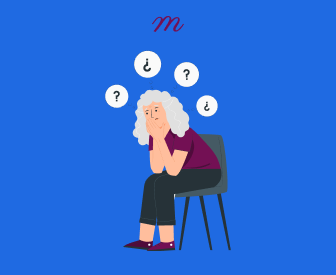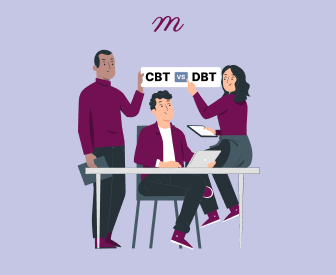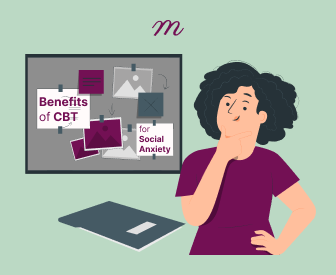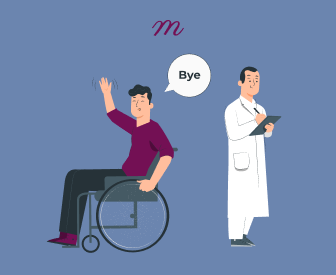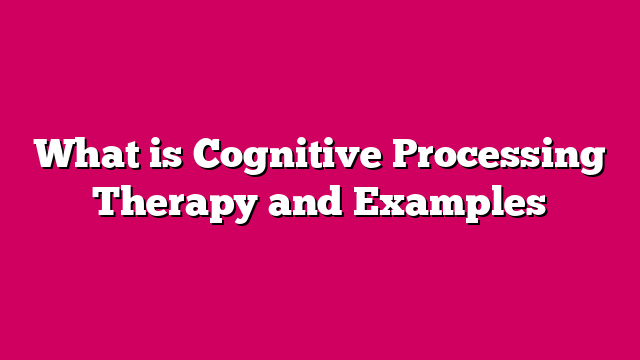Have your progress notes written for you automatically
Globally, the pervasive nature of mental health conditions and disorders cannot be denied. The impact of mental illness reverberates across geographical borders, socioeconomic status, and age groups, affecting millions of people at any given moment. Yet, amidst the staggering prevalence of mental health conditions, there is the shadow of misinformation, misunderstanding, and judgment. Despite mental illness being an intrinsic part of the human experience, public perception is distorted by these myths and misconceptions – perpetuating stigma, discrimination, and inadequate access to mental health treatment.
Here are some shocking statistics (Harvard Medical School, 2023)
- According to a recent study, one out of every two people in the world will develop a mental health disorder in their lifetime.
- In the United States, 46.4% of adults will experience a mental illness during their lifetime.
- In 2021, 22.8% of U.S. adults experienced mental illness (57.8 million people).
This article will debunk some common myths, revealing the misconceptions that have clouded society’s understanding of mental health and illness. The consequences are significant. Stigma casts a dark shadow over people struggling with mental health challenges, resulting in isolation, stifled discourse, and feelings of shame and alienation. The persistence of these myths discourages individuals from seeking the help they desperately need.
These myths can no longer go unchallenged. It’s time to step into the light of truth, inclusiveness, compassion, and informed awareness. Read more about the most common myths:
Myth 1: Mental Health Disorders are Uncommon
In reality, mental health issues are quite prevalent (see the statistics above). Worldwide, depression is the leading cause of disability, affecting more than 264 million people (Institute of Health Metrics and Evaluation, 2023). Anxiety disorders are also very common, impacting millions of people.
This myth often prevents individuals from acknowledging their own struggles or extending empathy to those around them. Mental health issues are not the exception – they are the rule because they are as much a part of the human experience as physical problems. Their prevalence highlights the urgent need for access to appropriate mental health care, understanding, and support.
Understanding the prevalence of mental health disorders is not just about the statistics – it’s also a call to action. It’s time to break the silence surrounding mental illness and dispel the harmful myth that mental health conditions are a rare or isolated phenomenon. By acknowledging this, society is better equipped to extend compassion and support to those who need it most.
The urgency of promoting mental health awareness and destigmatization is clear. This myth must be replaced with the understanding that mental health disorders are widespread, affecting individuals of all demographics on a global scale. It’s only through this recognition that society will begin to dismantle the barriers to treatment, foster empathy, and pave the way for a world where mental health is a universally prioritized aspect of well-being.
Myth 2: Mental Illness is a Sign of Weakness or Lack of Character
This damaging and stigmatizing belief has persisted for centuries, and it’s essential to debunk this myth to promote an accurate understanding of mental health.
Mental illnesses are complex conditions that arise from a combination of genetic, biological, social, environmental, and psychological factors. They are not a result of personal weakness or a lack of character. Just as physical illnesses can affect anyone (regardless of character or strength), mental illnesses affect people from all walks of life.
Research indicates that many mental disorders have a biological basis, and factors such as chemical imbalances, genetic predisposition, and alterations in brain structure and function contribute to the development of mental health conditions (National Library of Medicine, 2007).
Mental illness affects each person differently, and a wide range of symptoms and behaviors are possible. Labeling variations as weaknesses or character flaws oversimplifies the complexity of mental health.
Access to healthcare, socioeconomic status, discrimination, trauma, and life stressors play a significant role in the development and/or exacerbation of mental health symptoms. Blaming people for their mental health struggles ignores important external influences.
Myth 3: The Mentally Ill are Violent
The media has historically portrayed mentally ill people as dangerous and violent. Debunking this inaccurate and harmful myth is crucial, as it perpetuates stigma and discrimination against people with mental health conditions.
One of the key reasons this myth persists is the misrepresentation of statistics. While there are isolated cases of violence involving the mentally ill, most people living with mental health conditions are not violent. Research indicates they are more likely to be victims of violence than perpetrators (Desmarais, et al., 2014).
Perpetuating the stereotype that mentally ill people are violent not only affects how society views them but also influences how they view themselves. They may internalize this myth, leading to shame, guilt, and low self-esteem, which ultimately impacts recovery.
This myth has legal implications, as it may lead to discrimination in employment, housing, and access to services. It also raises questions about the fair and humane treatment within the criminal justice system.
Myth 4: Mental Health Disorders Are Not Real Illnesses
Some people mistakenly believe that mental health conditions are merely a product of the imagination. Brain imaging studies demonstrate structural and functional differences in the brains of people with mental health disorders. Psychotherapy, medication, and other evidence-based treatments effectively reduce symptoms and improve the lives of people with mental illnesses.
Telling someone with a mental health disorder to “snap out of it” or “think positive” is not only unhelpful but extremely harmful. Mental health disorders are not a matter of choice, willpower, or change of attitude – they are complex conditions that require appropriate treatment and support.
Additionally, mental health disorders are not a matter of willpower or determination. While personal resilience and coping skills play a role in managing mental illness, they cannot replace evidence-based treatments. Suggesting that individuals can simply “will” themselves out of mental illness oversimplifies the complexity of these conditions.
Myth 5: Medication is the Only Treatment for Mental Illness
While medication can be an essential component of treatment, it’s not the only solution. People with mental health conditions have unique experiences and requirements, and many treatment approaches are available to address these diverse needs.
Believing medication is the only treatment for mental illness oversimplifies the complex nature of mental health care and ignores the wide range of effective treatment options available, such as the following options.
- Psychotherapy, such as cognitive-behavioral therapy (CBT), dialectical-behavior therapy (DBT), and interpersonal therapy (IPT), is a proven and widely used treatment. Therapy and counseling help people develop coping skills, build resilience, improve self-awareness, and much more.
- Lifestyle changes, including regular physical activity, a nutritious diet, adequate sleep, stress management, and reduced substance use, can have a significant impact on mental health. These changes complement other forms of treatment and improve well-being.
- Peer support and group therapy offer individuals the opportunity to connect with others who share similar experiences. These supportive environments can be invaluable in the recovery process, providing a sense of community, belonging, and understanding.
- Mindfulness and meditation have been shown to reduce symptoms of anxiety, depression, and other mental health symptoms.
- Alternative therapies like art therapy, equine therapy, music, and yoga can be valuable additions to a holistic treatment plan.
Mental health care is multidimensional, and treatment plans should be tailored to the individual’s specific needs and preferences. A combination of approaches can be quite effective in promoting mental well-being and recovery.
It’s important to note that not everyone with a mental health disorder requires medication, and treatment decisions should be made collaboratively between the individual and their healthcare provider.
Myth 6: Mental Illness is a Permanent Condition
Mental health disorders are not necessarily lifelong conditions. Many individuals experience significant improvement in their symptoms with appropriate treatment and support. Early intervention, access to effective treatments, and a supportive environment all contribute to recovery, which is a unique journey for each person. There is hope for improvement and healing.
Myth 7: Seeking Mental Health Treatment Means Someone is “Crazy”
Acknowledging and seeking help is a courageous and responsible step toward improving one’s well-being. This step requires strength, vulnerability, and courage. Many individuals who have navigated their mental health journeys with openness and vulnerability are better equipped to create connections with others, build meaningful relationships, and contribute positively to their communities.
Myth 8: Mental Health Disorders Only Affect Adults
While mental health conditions are often associated with adults, children, and adolescents can also experience mental illness. Recognizing and addressing mental health issues in youth is crucial, as early intervention can prevent long-term consequences, build resilience, and improve overall well-being.
Children and teens experience a wide range of mental health disorders, including anxiety, depression, attention-deficit/hyperactivity disorder (ADHD), and autism spectrum disorders. Early intervention and appropriate treatment are critical in preventing long-term consequences.
Myth 9: You Can Tell if Someone Has a Mental Health Disorder by Their Appearance
This myth perpetuates harmful stereotypes, contributes to stigma, and oversimplifies the complex nature of mental health. Many mental health disorders are “invisible” in that there are no obvious physical symptoms or outward signs. Someone can have a mental health disorder without displaying any noticeable signs through their appearance. Conditions like depression or anxiety primarily manifest in a person’s thoughts, emotions, and behavior rather than their appearance.
There is no “look” or appearance associated with mental health conditions. People with the same diagnosis can present with very different symptoms and behaviors.
Some individuals develop coping mechanisms to hide their symptoms, especially in public or social settings. They may put on a facade to appear “normal” to avoid judgment, making it very challenging to determine their mental health status based on appearance alone.
Many individuals with mental health disorders are high-functioning – they can maintain daily responsibilities, such as work or school, and appear “normal” to others. This often masks their internal struggles.
Myth 10: Trauma Causes All Mental Health Disorders
While trauma can contribute to the development of mental health disorders, it is not the sole cause. Genetics, brain chemistry, social and environmental factors, family history, and other elements play significant roles. Mental health disorders are multifaceted, and their origins are often a combination of factors and influences.
Myth 11: You Can’t Lead a Fulfilling Life with a Mental Health Disorder
Mental illness does not equate to a life devoid of joy, meaning, and peace. Many individuals living with mental health conditions lead rich, fulfilling lives. With the appropriate treatment, resources, support, and self-care strategies, individuals can effectively manage their symptoms.
Individuals with mental health disorders have diverse experiences, and not everyone’s journey is the same. Many develop resilience, which can lead to personal growth, goal achievement, increased self-awareness, and valuable life skills.
There are many success stories of individuals who have not only managed their mental health disorders but have excelled in life. Many well-known artists, athletes, entrepreneurs, and leaders openly share their experiences with mental health challenges and serve as inspiring examples.
Society is increasingly recognizing the importance of mental health. As awareness grows, more resources, support systems, and opportunities become available, making it easier for mentally ill individuals to lead fulfilling lives.
Conclusion:
Debunking myths surrounding mental health disorders is an ongoing effort that requires education, open dialogue, compassion, and empathy. By challenging these myths, a more inclusive and supportive society is created where access to appropriate care is prioritized. Individuals will feel empowered to seek help when stigma is reduced and mental health is prioritized. It’s essential to continue spreading accurate information and fostering a culture of acceptance and understanding.
It’s crucial to rely on evidence-based information and foster a supportive and compassionate society where mental health issues are recognized, understood, and treated with the same importance as physical health concerns. Some positive outcomes include:
- encouraging help-seeking behavior. By dispelling the idea that seeking help is a sign of weakness or “craziness,” individuals are more likely to reach out for support – leading to early intervention while preventing conditions from worsening.
- reducing stigma. Addressing these myths directly challenges the stigmas attached to mental health disorders. When society recognizes these conditions as real and treatable, it reduces the discrimination that people with mental illness face.
- promoting understanding. Debunking myths helps educate society about the complexity of mental health. It encourages empathy and compassion while fostering a supportive environment where individuals feel understood and accepted.
- improving treatment outcomes. When individuals seek help without stigma and misconceptions, they are more likely to fully engage in treatment – leading to more effective outcomes and a quicker path to recovery.
References:
- National Library of Medicine (2007). https://www.ncbi.nlm.nih.gov/books/NBK20369/#:~:text=Genetic%2C%20environmental%2C%20and%20social%20factors,of%20developing%20a%20mental%20illness.
- Desmarais S., Van Dorn R., Johnson K., Grimm K., Douglas K., & Swartz M. (2014). Community violence perpetration and victimization among adults with mental illnesses. American Journal of Public Health, 104(12):2342-9.
- Harvard Medical School (2023). Half of the world’s population will experience a mental health disorder. Retrieved September 16, 2023, from: https://hms.harvard.edu/news/half-worlds-population-will-experience-mental-health-disorder#:~:text=One%20out%20of%20every%20two%20people%20in,according%20to%20a%20large%2Dscale%20study%20co%2Dled%20by
- Institute of Health Metrics and Evaluation (2023). Global Health Data Exchange (GHDx): https://vizhub.healthdata.org/gbd-results/





